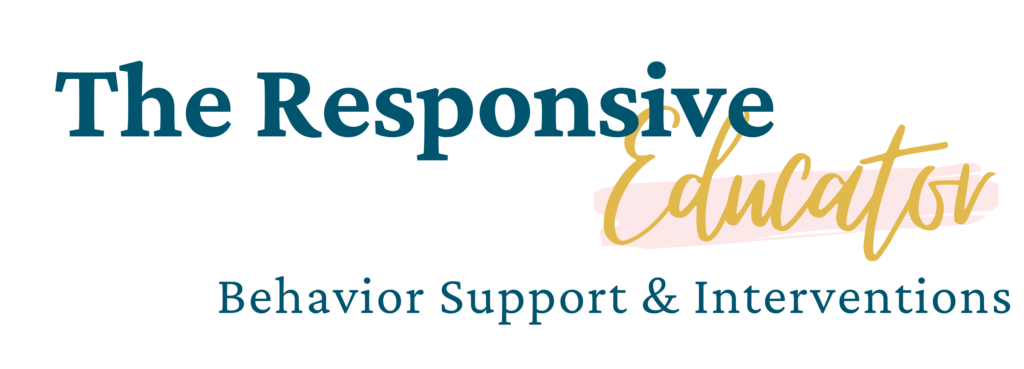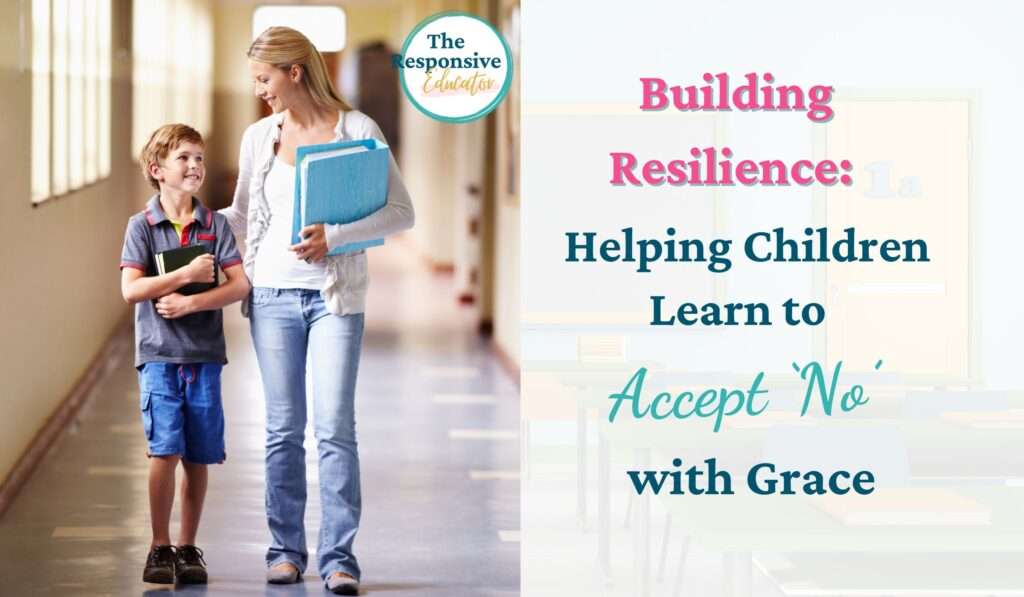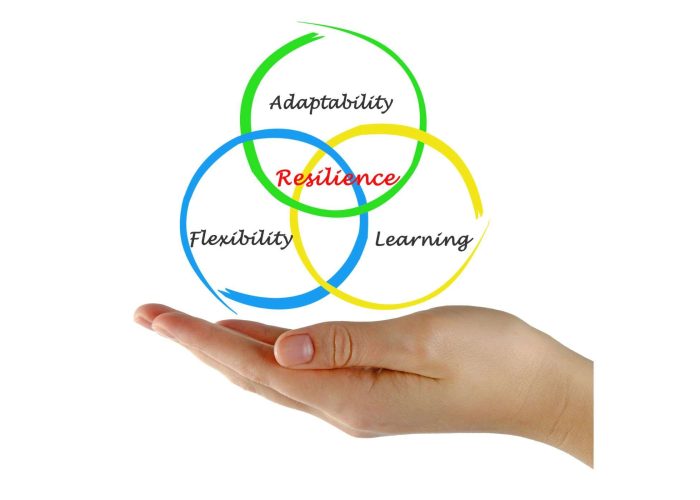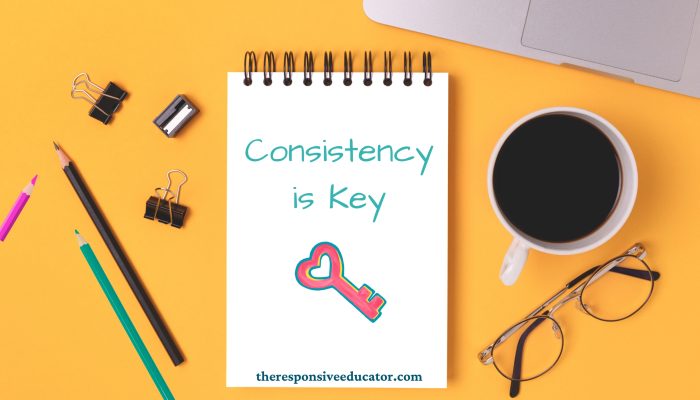

Learning to accept ‘no’ for an answer is a crucial skill for children. As adults, it’s our job to teach them about the importance of boundaries, respecting decisions, and handling disappointment and self-control. In this blog post, we’ll dive into why it’s essential for kids to learn to accept ‘no.’
Imagine a scenario where a child struggles with this concept. I once worked with a student who, when faced with ‘no’ or any form of restriction, would erupt into screams, tears, and even occasional outbursts of throwing objects. This behavior not only hindered their learning but also disrupted the focus of those around them. It got to the point where many adults hesitated to say ‘no,’ choosing instead to tread carefully to avoid potential disruptions.
This isn’t uncommon in educational settings. Most teachers have encountered at least one child who resists accepting ‘no’ without argument, often escalating into aggression, disruption, or even destructive behavior. This underscores the urgency of teaching this vital skill to our young learners.
In the following sections, we’ll explore practical strategies that adults can use to help children like the one I worked with, and many others, develop the ability to gracefully accept ‘no’ while nurturing their emotional growth and resilience.
Note: I am an Amazon Affiliate. If you purchase products through the links provided, I will earn a small commission at no extra cost to you, which helps support the blog.

Accepting ‘no’ as an answer is an essential life skill for children to develop, as it teaches them boundaries, self-control, and the ability to cope with disappointment. It also helps them to understand and respect authority figures’ decisions and navigate the social world.
The CASEL 5 SEL competencies are useful in teaching children how to accept ‘no’ as an answer, as they provide a framework for building self-awareness, social awareness, responsible decision-making, relationship skills, and self-management. By promoting these competencies, educators and parents can help children develop the skills necessary to accept ‘no’ gracefully and handle difficult situations with emotional intelligence.
To learn more about the CASEL 5 Social-Emotional Competencies, read this blog post. You can also visit their site here.
Learning to accept “no” as an answer is an important aspect of developing healthy boundaries, and this is especially true for children. By respecting boundaries, children are able to develop a sense of self-control and an understanding of what is and isn’t acceptable behavior. This helps them to navigate the world around them more effectively and to build healthy relationships with others.
When children are unable to accept ‘no’ they may struggle with impulse control and find it difficult to regulate their emotions. This can lead to behavior that is disruptive or even harmful to others. By learning to accept ‘no’ children can develop the ability to delay gratification and to think more critically about their actions. This is a skill that will serve them well throughout their lives, both in their personal and professional relationships.
When children are taught to accept ‘no,’ they learn to handle setbacks and rejections in a healthy and positive manner. They realize that failure is a part of life and that they can bounce back from it.
Consider a child who, after countless attempts, finally secured a spot on the school soccer team. However, one day, they didn’t make the starting lineup. Instead of despairing, they understood that it was just one game, one moment of disappointment. This kind of resilience is important not only for their emotional well-being but also for their success in life.
Children who can handle disappointment and setbacks are better able to persevere through challenges and achieve their goals. Additionally, they become more adaptable to change, which is an important life skill in a constantly evolving world.
Building resilience in children from a young age helps them become confident, self-reliant, and successful adults.

Accepting ‘no’ for an answer is an essential part of teaching children respect for authority figures. It helps children to understand that there are people who have more experience and knowledge than they do, and that it is important to listen to and respect their decisions. This includes parents, teachers, and other adults who have a role in the child’s life.
Picture a scenario where a boy of 12, who has been taught from a young age to respect the decisions of his father as an authority figure, faces a request from his friends to sneak out for a late-night adventure. Even though he is tempted to join them, he remembers his father’s earlier ‘no’ when he asked to go out late.
Because of the respect he has learned to have for his father’s decisions, he makes the choice to turn down his friends’ invitation, opting for a safer and more responsible choice. This illustrates how teaching children to respect authority figures can guide them in making wise decisions and prioritizing their well-being.
Additionally, when children learn to respect authority figures, they are more likely to follow rules and guidelines that are in place to keep them safe and help them succeed. This willingness to adhere to guidelines not only ensures their safety but also contributes to a more harmonious and successful learning environment.

Learning to accept ‘no’ is an important part of teaching children to respect boundaries and the decisions of others. It helps children to understand that everyone has their own needs, preferences, and limits, and that it’s important to be mindful of these when interacting with others.
Imagine a scenario where a group of children is playing together, and one child suggests a game that another is not comfortable with. When the second child says ‘no’ to the game, the first child respects that decision and suggests an alternative game that everyone can enjoy. By learning to respect other people’s ‘no,’ children can develop empathy, compassion, and a deeper understanding of themselves and others.
Accepting ‘no’ as an answer is also an essential part of teaching children respect for themselves and others. It helps them to understand that boundaries are important and that they have the right to say ‘no’ when they feel uncomfortable or unsafe. At the same time, it teaches them to be respectful of other people’s boundaries and decisions, which is an important skill for healthy relationships and social interactions.

Learning to accept ‘no’ as an answer can also help children to develop empathy and social awareness. When children understand that there are limits to what they can and cannot do, they may become more aware of the impact of their behavior on others.
Imagine a scenario where a child eagerly wants to play with a toy that belongs to another child, but when they ask, they’re told ‘no.’ In this moment, the child begins to understand that the other child has feelings and preferences that should be respected. They may notice the disappointment or attachment the other child has to the toy.
With support, this experience can lead to the inquiring child considering the thoughts, feelings, and perspectives of others before making requests or taking actions. As they reflect on this situation, they might even relate it to moments when they didn’t want to share their special items, realizing how important it is to have their choices respected as well.
These early lessons in empathy, where they put themselves in the other child’s shoes and also connect it to their own experiences, can pave the way for more positive and respectful relationships in the future.
By practicing empathy and social awareness in situations like these, children not only improve their ability to understand others but also learn to communicate effectively, resolve conflicts, and appreciate the importance of treating others with kindness and compassion. These skills are invaluable for navigating social situations and building meaningful connections with others.

Furthermore, accepting ‘no’ as an answer can help children learn to manage their emotions and to handle difficult situations.
Consider a child who, after eagerly anticipating a visit to an amusement park, arrives only to find it unexpectedly closed for the day. While disappointment may initially set in, they gradually learn to cope with this unexpected ‘no’ and the accompanying emotions. Over time, they develop the resilience to bounce back from such setbacks, which fosters crucial life skills that enable them to thrive in the face of adversity.
Overall, the benefits of learning to accept ‘no’ as an answer are numerous and far-reaching. By developing skills such as self-control, resilience, respect, empathy, and social awareness, children can become better equipped to navigate the challenges and opportunities of life. As educators and parents, it is our responsibility to help children develop these important skills by providing guidance, support, and positive role modeling.

When explaining to children why it is important to accept ‘no’ as an answer, use language that they can understand. It is important that our language reflect the age and developmental level of the child we are talking to.
For example, use simple words and shorter sentences for younger children, and more complex language and longer sentences for older children. Telling a younger child, “No, we can’t do that because it’s not safe” will be much more effective than “I’m sorry, but due to the inherent dangers of the activity in question, we are unable to proceed.”
It may also be useful to explain the importance of acknowledging a child’s feelings when saying ‘no,’ such as saying “I know you really want to do that, but it’s not safe” or “I understand you’re disappointed, but we can’t do that right now.”
Acknowledging a child’s feelings means recognizing and validating their emotional experience. This is important because it helps the child feel heard and understood, which can help to reduce their emotional distress and build trust and communication between the child and the adult.
When saying ‘no’ to a child, acknowledging their feelings can be particularly important because it can help the child accept the decision more easily. For example, if a child wants to go to the park, but it’s raining outside, the adult might say “I know you really want to go to the park, but it’s raining right now and we need to stay inside. How about we play a board game instead?” This acknowledges the child’s desire to go to the park while also explaining why it’s not possible and offering an alternative activity.
Acknowledging feelings can also help to develop the child’s emotional intelligence and empathy. When children feel heard and understood, they are more likely to learn how to express their own feelings in a healthy way and to understand and empathize with the feelings of others.

Helping children accept ‘no’ is best achieved by offering specific examples. For instance, explain that when they want to do something unsafe, like running into the street, it’s vital to heed the ‘no’ from the adult keeping them safe. Similarly, when they desire candy before dinner, clarify that ‘no’ is necessary for their health and appetite.
Additionally, it’s crucial to explain why rules and boundaries matter. For school rules, like walking quietly in the hallways, emphasize they create a safe, fair, and orderly learning environment for all. This teaches respect for both teachers and classmates and helps children understand the importance of adhering to rules.
Through examples and explanations, children grasp the significance of accepting ‘no’ and following rules, fostering self-control, empathy, and responsibility as they navigate school and life.

It’s common for children to ask repeatedly or beg for things they want, especially if they have been successful in the past in getting what they want by doing so. However, it’s important for parents and caregivers to stand their ground and not give in to these demands. If they do, it sends the message to the child that begging and repeated asking can ultimately lead to success.
In order to avoid this problem, it’s crucial to remain firm and not give in to these demands. Although it may be difficult for children to accept ‘no,’ calmly explaining that asking again won’t change the answer can help them understand that they need to respect the boundaries set by their parents or caregivers. By doing so, children can begin to understand that ‘no’ means ‘no,’ and that asking repeatedly or begging will not change that answer.
By maintaining consistency in responses, parents and caregivers can help children to develop important life skills such as accepting and respecting boundaries, developing patience and self-control, and understanding that sometimes things don’t go their way. These skills can be valuable as they grow up and face challenges in school, work, and personal relationships.

Positive reinforcement is an effective way to encourage and reinforce good behavior in children. When children exhibit the skill of accepting ‘no’ as an answer, it’s important to provide immediate and specific praise to acknowledge their efforts.
Praising positive behavior can take many forms, from a simple “good job” to more specific feedback such as “I really appreciate how you listened and respected my decision.” The key is to be clear and specific about what behavior you’re praising and why it’s important.
In addition to verbal praise, nonverbal cues such as high-fives, hugs, or a thumbs-up can also be effective ways to reinforce positive behavior. Physical gestures of approval can be particularly meaningful for younger children, who may not fully understand verbal praise.
Praising good behavior can have many benefits for children, including increased self-esteem, motivation, and a desire to continue exhibiting positive behaviors. When children feel recognized and appreciated for their efforts, they are more likely to feel good about themselves and their abilities, which can ultimately lead to greater success in other areas of their lives.
Overall, providing consistent and specific praise for good behavior can be a powerful tool in encouraging and reinforcing positive behavior in children. It’s important to remember that even small steps towards accepting ‘no’ can be worthy of recognition and that positive reinforcement can help children build confidence and resilience as they navigate the challenges of growing up.

Learning how to express emotions in a healthy way is an essential skill for children to develop. When children hear ‘no,’ it’s natural for them to feel frustrated, disappointed, or upset. Helping children to recognize and name these emotions can be an important step in teaching them to accept ‘no’ as an answer.
Parents and caregivers can encourage children to identify and communicate their emotions by asking open-ended questions, such as “How are you feeling right now?” or “What emotions do you feel when you hear ‘no’?” This approach can help children to develop a vocabulary to express their emotions and become more self-aware.
It’s also important to teach children that it’s okay to have tough feelings; it is ok to feel disappointed when we are told ‘no,’ but the way we handle those feelings is important.
Encouraging children to talk about how they feel and offering suggestions on how to deal with those emotions in a positive way can help them to process their emotions in a healthy way. This might include suggestions such as taking deep breaths, going for a walk, or finding a quiet place to calm down. Parents and caregivers can also model healthy emotional expression themselves, by showing their own emotions in a constructive way.

Modeling how to accept ‘no’ is an effective way to teach children this skill. When children observe adults calmly accepting ‘no’ without becoming angry or upset, they are more likely to internalize this skill. This is because children learn best through observation and imitation, especially from those they trust and look up to.
Imagine a parent attending a PTA meeting where they propose a new fundraising idea for the school. After presenting the idea, the PTA board member calmly responds with “I appreciate your suggestion, but we have already decided on a fundraising plan for this year.” The parent nods and says “Thank you for considering my idea,” without arguing or becoming upset. If their child were present and observing, they would see their parent accepting the decision without getting angry or upset, modeling the behavior of accepting ‘no’ in a calm and respectful manner.

Finally, it is important to give children opportunities to make decisions and exercise control over their own lives within safe and reasonable limits. This can help them to feel empowered and may make it easier for them to accept ‘no’ in situations where they have less control.
It can be helpful to provide children with choices within safe and reasonable limits, such as choosing between two healthy snacks or two age-appropriate activities. This can help them to feel more in control of their lives and may make it easier for them to accept ‘no’ in situations where they have less control. Additionally, it can be useful to explain to children the reasons behind certain decisions and rules, such as why they need to wear long sleeves when it is cold outside.
By using a combination of these strategies and being patient and consistent, parents and teachers can help children to develop the important skill of accepting ‘no’ as an answer.

Having a child draw or write about a time when they were told ‘no’ can be a helpful way for them to process their emotions and learn from the experience. It allows them to express their thoughts and feelings in a creative way, which can be especially helpful for children who may have a harder time communicating their emotions verbally.
For instance, a child might draw a picture of themselves asking their parent for a toy at the store and being told ‘no.’ They might also draw how they felt in that moment, such as sad or disappointed.
After completing the drawing, the child and adult can discuss the situation and the child’s feelings about it. The adult can help the child understand that it’s okay to feel disappointed or frustrated when they don’t get what they want, but that it’s important to learn how to handle those emotions in a positive way.

Alternatively, the child might write a short story about a time when they were told ‘no’ and how they felt about it. This can help them practice their writing skills while also reflecting on their emotions and experiences.
Again, the adult can discuss the story with the child and help them identify positive ways to handle disappointment in the future.
Through this exercise, the child can learn that it is normal to feel disappointed or upset when they are told ‘no,’ but they can also learn how to cope with these emotions in a positive and healthy way. It can also help them understand that ‘no’ doesn’t always mean the end of the world, and that they can move on from disappointment and still find joy in other things.

Role-playing scenarios where the child asks for something and the adult responds with a ‘no’ can be an effective way to teach children how to handle disappointment and accept ‘no’ with grace. Through role-playing, children can learn how to respond appropriately when they receive a negative answer.
This skill is particularly important as children grow and encounter situations where they will hear ‘no’ in various forms, such as not being selected for a team, not receiving a good grade, or not getting the toy they want.
Here is an example of how to use role-playing scenarios to teach children how to handle disappointment:
Through repeated practice, children can learn to accept ‘no’ as a part of life and develop the skills to handle disappointment in a healthy way. Role-playing scenarios like this can also help build empathy as children learn to see things from other people’s perspectives and understand that not getting what they want isn’t always personal.

The “Red Light, Green Light” game is a classic children’s game that can be used to teach children to respect boundaries and stop when they hear ‘no’ or ‘stop.’ Here’s how you can use this game to teach this important lesson:
Explain the rules: First, explain the rules of the game to the children. Designate one person as the ‘stop’ person who will say ‘red light’ and one person as the ‘go’ person who will say ‘green light.’ Explain that when the ‘stop’ person says ‘red light,’ the children must freeze and stop moving immediately, no matter what they’re doing. When the ‘go’ person says ‘green light,’ the children can move again.
Play the game: Play the game with the children. Have them line up at a starting point, and when the ‘go’ person says ‘green light,’ they can start moving forward. The ‘stop’ person can say ‘red light’ at any time, and when they do, the children must stop moving immediately. If a child moves after the ‘stop’ person says ‘red light,’ they are out of the game. The game continues until one child reaches the finish line or until everyone has been eliminated.
Reinforce the lesson: After playing the game, take some time to talk with the children about the lesson they can learn from it. Explain that when they hear ‘no’ or ‘stop,’ they need to respect that boundary and stop what they’re doing. Encourage them to talk about how it felt to stop when they heard “red light” and what they learned from the experience.
By playing this game and discussing the lesson afterward, children can develop the skills they need to handle disappointment and respect others’ boundaries.

Simon Says is another classic game that can be used to teach children to listen and follow instructions, including commands that involve saying ‘no’ or ‘stop.’ To play the game, an adult or child acts as ‘Simon’ and gives instructions to the other players, such as ‘Simon says touch your toes’ or ‘Simon says hop on one foot.’ The catch is that players should only follow the instructions if ‘Simon says’ first. If they follow an instruction without hearing ‘Simon says,’ they are out.
To more directly incorporate the concept of ‘no’ or ‘stop’ into the game, the adult or child acting as ‘Simon’ can include commands like ‘Simon says stop,’ ‘Simon says say no,’ or ‘Simon says don’t do anything.’ The other players will need to listen carefully to the instructions and respond accordingly. If they continue to move or do something after hearing ‘Simon says stop,’ they are out.
This helps children learn to pay attention to instructions and to stop when they hear a command that involves saying ‘no’ or ‘stop.’ It can also help them understand the importance of following rules and respecting boundaries, as well as the consequences of not doing so.
For example, if a child continues to move or do something after hearing ‘Simon says stop,’ they may be out of the game. This can be a valuable learning experience, as they realize that not following instructions can have consequences. Additionally, if a child is designated as ‘Simon,’ they may develop leadership and communication skills as they give instructions and guide the other players.

Teaching children to accept the answer no is an important life skill that can benefit them in countless ways. By learning to accept rejection and disappointment gracefully, children can develop resilience, empathy, and better interpersonal relationships.
The strategies and activities discussed in this post can help adults support children in developing this skill in a fun and engaging way. Remember, like any skill, it takes practice and patience to develop, but with consistent effort, children can learn to accept no with confidence and grace.
If you have any more strategies or activities that you use with your students and have found successful, please share them with me!
As a teacher, you know that children don’t always like hearing the word “no.” It can be difficult for them to accept that they can’t always have what they want. That’s why it’s important to help your students learn how to handle the word “no” in a healthy and positive way.
That’s why I’m excited to offer two interactive readaloud resources that can help you save time and effortlessly integrate SEL and ELA instruction in your classroom. Designed for elementary classrooms, our resources are specifically tailored to meet the unique needs of your students, and can help you overcome common obstacles to effective instruction. (To learn more about interactive readalouds, see this blog post.)
The first resource is an interactive readaloud & book companion to the book I Just Don’t Like the Sound of No by Julia Cook. The story follows a young boy named RJ who is determined to get his way, but struggles to accept ‘no’ as an answer. With the help of his teacher, RJ learns the importance of listening to others and expressing himself in a positive way, even when he doesn’t get what he wants.
Using this book companion, your students will develop important social-emotional and language arts skills while enjoying a relatable and meaningful story.
The second resource is an interactive readaloud and book companion to the book Train Your Dragon to Accept No by Steve Herman. This captivating children’s book is just one in a series of thoughtfully crafted books that can be used to teach children about the nuanced concepts of disagreement, emotions, and the vital art of anger management. Journey alongside a boy and his dragon as they learn to embrace the power of accepting ‘no’ for an answer and navigating disagreements in a constructive manner.
Through the relatable character of the dragon and the skills worked on in this interactive readaloud, children gain insights into the importance of acknowledging differing perspectives and managing their emotions when faced with disagreement.
By combining these great books with my interactive readalouds/book companions in your classroom, you can help your students learn to handle the word “no” in a positive way, while also developing important social-emotional and language arts skills. Don’t miss out on this valuable opportunity to enhance your teaching and help your students develop the skills they need to succeed! Check out the book companions today!

Support your students’ individual needs with our exclusive Classroom Concerns Checklist.
Identify key concerns in areas like:
…and more to help drive collaboration and problem-solving.
Sign up now to receive instant access and valuable insights on addressing classroom concerns.
